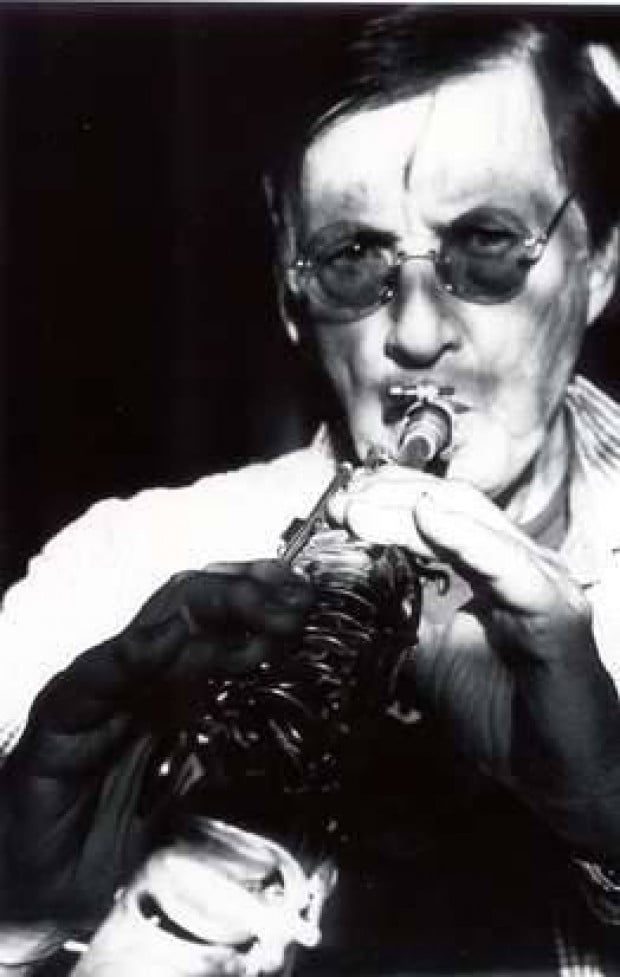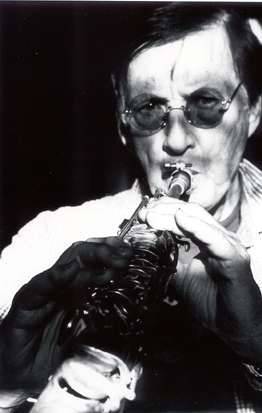If a historian hovered today above Malibu like a beachcomber looking for treasures in the sand, he might still miss the gem living at the northern end of the city, along one of many private cul-de-sacs leading to the sea.
And yet, almost without detection, the gem in question, Gil Mell, continues to forge into the future with little fanfare.
Never mind that he is 70 years old. Never mind that he could rest proudly and eternally under the laurels he earned decades ago while revolutionizing the music industry. This artist/composer/musician/inventor continues to surpass artists born generations after him in creative innovation through his computer-generated art.
But long before computers even existed, Mell began his career in music.
“I was two years old when I saw my first saxophone,” said Mell about his artistic beginnings. “I’ll never forget it. It was brass and gleaming on the kitchen table and I just looked at it and thought it was the most beautiful thing I’d ever seen in my life.”
The same year, he was abandoned by his parents and left with an adoptive family that hated music.
“I wasn’t allowed to have music lessons or own an instrument or anything like that. Even in school, music was not part of the day-to-day regimen. They didn’t hand you an instrument to see whether you could play but they would hand you a piece of paper and some crayons, so everyone knew I could draw early on.”
Before he played a public note, young Mell displayed an exceptional talent for representational drawing.
“I was winning contests in school but I had to unlearn what I knew because all I could do was be a camera and draw whatever I could see. I hadn’t yet learned to filter things through my mind. You have to forget what you know in order to create. It’s not a matter of technique, it’s thinking like a child and having your mind wide open and receptive to everything that you come across.”
At age 14, Mell earned enough money working after school to finally buy his first saxophone and taught himself to play by practicing secretly in a boxcar in the Lehigh Valley Railroad in New Jersey. Five years later he was signed with the well-known jazz label, Blue Note, and eventually moved to California to work as a composer.
With his “Mazarati mind” wide open, Mell took what he knew about jazz working with Blue Note and elevated the sound to the next level through the use of oscillators, filters, and a string of electronic instruments that he, himself, had designed and built. The “pips, squeaks, booms, blips, howls and quacks” coming from within the walls of UCLA’s Schoenberg Hall during one of Mell’s performances in 1968 with the first electronic quartet, the Electronauts, inspired Los Angeles Times jazz critic, Leonard Feather, to declare, “Here is our missing Sound of the ’70s!”
A year later, Mell was nominated for a Golden Globe award for composing the first all-electronic movie score for the film “Andromeda Strain,” written by Michael Crichton. Dubbed “Hollywood’s Electronic Music Wizard” by Daily Review writer Henry Roth, Mell scored more than 100 movies, TV series and specials after that and put out 14 albums, many packaged with covers that he had illustrated.
In Mell’s world, visual and aural media overlap like the color blue and its musical counterpart.
“It’s all the same thing,” the artist explained. “It’s form. You’re dealing with contrast. You have tension within a plot. Some crisis happens and you have dissonance. Then the music is pure and simple and diatonic like a pastoral scene. In it all, there is a theme and a focal point that keeps reappearing. It’s the same in a book, a picture or a poem.”
In a loft next to the seaside Malibu home that he shares with his wife of 37 years, Denise, Mell has been plying his trade with the passion and concentration of a 13-year-old computer nerd in front of a screen glowing with images that could have been created by 150 different artists instead of just one. There are no acrylics, no wafting smells of turpentine and not a paintbrush in sight, but within that little computer box exists all the tools necessary to create Mell’s millennial masterpieces.
“If Van Gogh or Rembrandt were alive today, they’d probably be doing what Gil Mell is doing,” wrote Rob Hill, in 1996, in Raygun magazine about Mell’s computer-painting technique termed “cybercloissonism” by Bowles/Sorokko/Yargar Gallery director Evan Uhlfelder. “Mell is the first of a new vanguard in the world of fine art.”
His canvas is a giant mouse pad. His tool, a pressure-sensitive pen that can mimic different brush strokes, pens, pastels or watercolors dipped in 32 million colors. He can instantly see his work blown up 500 times to adjust the fine detail or at 3 percent of the size to see the whole effect. Once the work is completed, the piece can be printed on an opaque paper or a translucent material giving it a stained-glass window effect in front of its own light source mounted in the frame (hence the term “cybercloissonism”).
Like synthesizers in the ’60s and ’70s, technological advantages have compacted all the necessary art instruments into a single space opening up worlds of possibilities for artists, rich and poor. Yet it takes progressive geniuses, like Mell, to boldly explore the power of electronics.
“What argument is there for going back in time?” wondered Melle. “There should be thousands of people who see the potential of this, but it doesn’t happen.”



